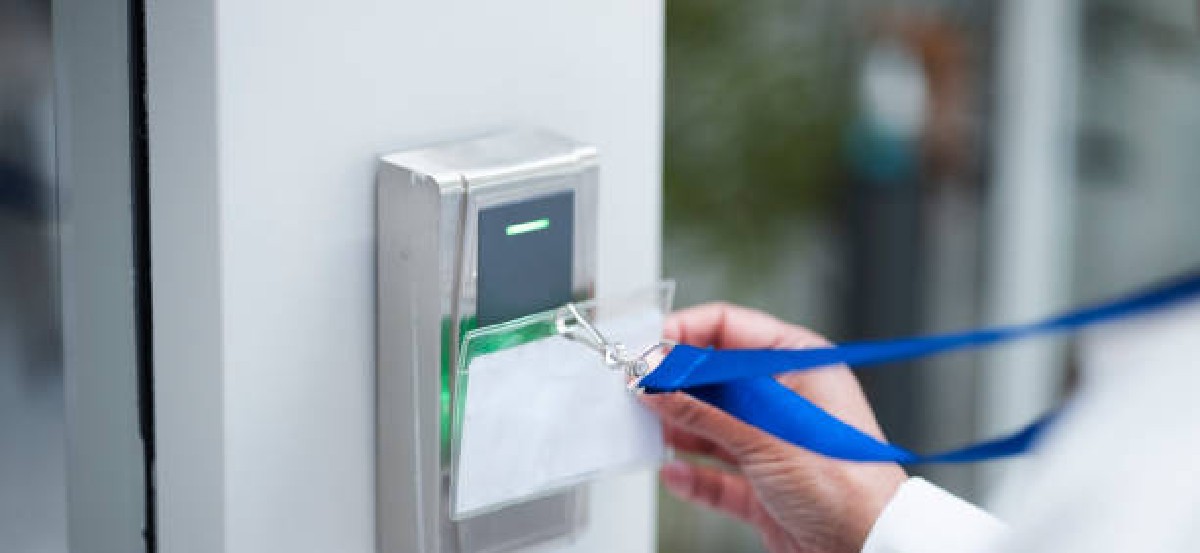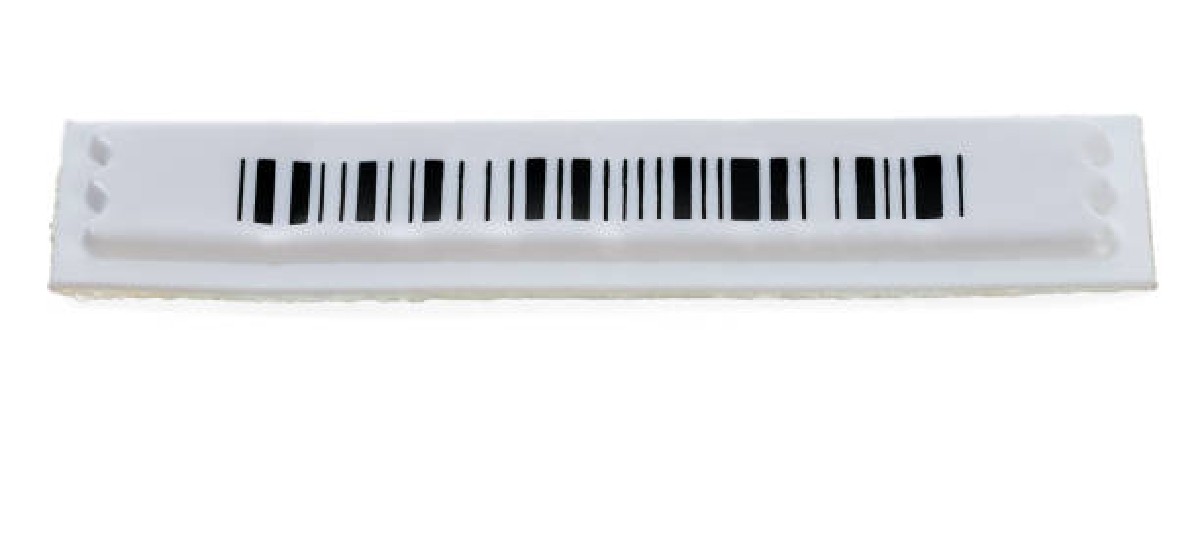In an ever-evolving world, security remains a paramount concern for individuals and businesses. The need to safeguard valuable assets and maintain a secure environment has led to the development of innovative solutions. One such solution that has gained significant traction recently is using security tags. These unassuming yet highly effective devices enhance security measures across various domains. In this article, we will delve into deposit labels, exploring their types, applications, benefits, and the future they hold in the realm of protection.

Table of Contents
How do security tags work?
Security tags typically consist of two parts: a tag attached to the item and a sensor. Security tags, also known as anti-theft tags or EAS (Electronic Article Surveillance) tags, are devices used to protect merchandise in retail stores and other businesses from theft.
- How do you remove security labels?
Security labels require removal or deactivation either at the point of purchase or by authorized store personnel. Typically, this is done using a specialized tool or magnetic detacher.
- How do security tags work?
Security tags have a sensor that detects tampering or removal. When this happens, they can trigger an alarm system at the store’s exit, alerting store staff to a potential theft.
- How do you remove security tags at the point of sale?
Cashiers or store staff use a specialized detaching tool or a deactivation device to remove or deactivate the security tag at the point of sale. This process allows customers to leave the store without triggering alarms.
1. Understanding Security Tags
What Are Security Tags?
Security is essentially diminutive electronic devices or labels intended to prevent theft and increase security. They are extensively employed to safeguard valuable items and assets by activating alarms or tracing their whereabouts in the event of unauthorized tampering or removal. These tags are available in diverse configurations, from rigid plastic casings to pliable adhesive labels, each customized to suit specific applications.
The Evolution of Security Tags
Security labels have evolved significantly since their inception. Initially, they primarily served in retail establishments to protect clothing and electronic items. However, technological advancements and increasing demands for improved security have expanded their functionality across various sectors.
2. Types of Security Tags
RFID Tags: Advanced Security Solutions
Radio-frequency identification (RFID) tags are a prevalent type of tag. They utilize radio waves to transmit information to a reader, making them highly efficient for tracking and inventory management. RFID tags are commonly used in retail and supply chain management.
EAS Tags: Preventing Unauthorized Removal
Electronic Article Surveillance (EAS) tags have gained fame for their use in commercial establishments. They create a magnetic field around the protected merchandise and trigger an alert when the item exits a predefined perimeter.
GPS Tags: Location-Based Security Solutions
The employment of Global Positioning System (GPS) tags is prevalent in tracking valuable assets, including vehicles and high-value cargo. These labels furnish real-time location data, making them indispensable for safety and logistics.
3. Applications of Security Tags
Retail Security: Safeguarding Merchandise and Profits
For a considerable period, retailers have depended on safety tags to thwart shoplifting. These tags are affixed to apparel and other goods, serving as a deterrent to potential thieves and notifying store staff in the event of an attempted theft.
Asset Tracking: Efficient Management and Security
In industries like logistics and transportation, tags have a crucial role in monitoring assets, including shipping containers and vehicles, to ensure the safe and efficient transport of goods. Asset tracking is a critical component of efficient management and security in today’s rapidly evolving business landscape. By utilizing advanced technologies such as RFID, GPS, and barcoding, organizations can maintain a real-time inventory of their valuable assets, ranging from equipment and vehicles to IT hardware and office supplies.
Vehicle Security: Protecting Your Assets on the Move
GPS security labels represent a significant breakthrough in the realm of vehicle safety. They enable proprietors to monitor the current whereabouts of their automobiles, thereby enhancing the likelihood of retrieval in the event of theft. Vehicle security is paramount for safeguarding valuable assets while they’re on the move. Whether it’s a fleet of delivery trucks, company cars, or specialized vehicles, ensuring their protection is a top priority for businesses. Modern vehicle security systems incorporate cutting-edge technology such as GPS tracking, alarms, and remote monitoring.

4. Benefits of Security Tags
Theft Prevention: Safeguarding Valuables
The primary benefit of safety tags is theft prevention. They are a visible deterrent, discouraging potential thieves from targeting protected items. Theft prevention is fundamental to safeguarding valuables in both personal and business contexts. It involves a combination of physical security measures and vigilant practices aimed at deterring theft and minimizing the risk of loss. Locks, alarms, surveillance systems, and secure storage solutions protect valuable assets.
Improved Inventory Management
RFID tags optimize inventory management by furnishing instantaneous information on the whereabouts and accessibility of items. This diminishes inaccuracies and amplifies efficacy. Security tags have revolutionized inventory management by enhancing security and streamlining operations. These small, inconspicuous devices, often equipped with RFID technology, enable businesses to maintain a more accurate and real-time inventory of their products. When attached to items, these tags can be easily tracked throughout the supply chain, from when they arrive in the warehouse to the point of sale.
Streamlining Inventory Management
Security tags also simplify inventory management. Retailers can track which items are leaving the shelves, helping them restock efficiently. This visibility allows for better demand forecasting, reducing overstock or stockouts, and improving overall inventory accuracy. Moreover, security tags are a powerful deterrent against theft, as they trigger alarms when tampered with or removed without proper authorization.
Enhancing Customer Experience
Customers appreciate the added provided by protection tags. Knowing that their purchases are protected can enhance their shopping experience. Beyond physical measures, raising awareness among individuals about security protocols and fostering a culture of vigilance can be
5. Implementing Security Tags
Installation and Integration
The successful implementation of safety tags requires careful installation and integration with existing systems. Businesses should follow best practices to maximize their effectiveness.
Best Practices
- Regular maintenance and testing of shield tags
- Employee training on tag usage
- Integration with security systems and databases
6. Future Trends in Security Tags
IoT Integration and Security Labels: A Powerful Combination
In the ever-evolving landscape of technology, the integration of the Internet of Things (IoT) with guarantee tags has ushered in a new era of enhanced measures. This dynamic combination brings unprecedented efficiency, real-time monitoring, and data-driven insights into security.
Enhanced Data Analytics: Potential of Security Labels
Enhanced data analytics capabilities have transformed safety tags from theft deterrents into powerful tools for gathering valuable insights and proactively fortifying measures. This article will explore how enhanced data analytics reshapes the landscape and its applications.
7. Conclusion
The evolution of security labels from rudimentary anti-theft devices to multifarious tools for asset protection has been noteworthy. Their varied applications and technological advancements guarantee sustained significance in augmenting security across diverse sectors.

FAQs
On the contrary, security tags often enhance the shopping experience by giving customers a sense of security.
Security labels are designed to be tamper-resistant, making it difficult for thieves to remove them without triggering an alarm.
Yes, GPS security labels can track personal items like smartphones or laptops.
Regular maintenance, including battery replacement and testing, is necessary to ensure protection tags function correctly.
